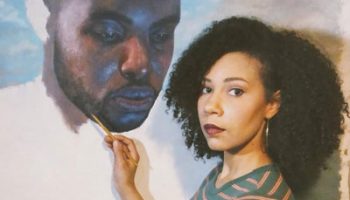At the age of 20, writer Hakim Bishara went to his local newspaper and asked to speak with the editor.
“I want to write for a newspaper, how do I do it?” he asked the editor. The editor picked up a random book from his desk and replied, “Review this and send it to me by next week.”
That is the exact moment Bishara’s career started.
“It all comes down to personal motivation and pursuing your ambitions,” Bishara said. “Writing is a very competitive field, but it’s all up to you.”
At 5 p.m. Sunday, July 17, in the Hall of Christ, Bishara will be giving the third Chautauqua Visual Arts Lecture of the season. Throughout his career, he has worked in multiple different realms, including writing, editing and researching. He received his master’s in art writing from New York City’s School of Visual Arts.

Bishara has worked for numerous media organizations, including BBC, Globes and Calcalist, of the latter two of which are Israeli newspapers. From documentary and fiction filmmaking, and magazine writing, to creating art and now writing exclusively about art, he has occupied many roles. He is currently the co-editor and interim editor-in-chief of Hyperallergic, an independent news outlet that covers all things art and pop culture. He is also co-director, curator and one of the founders of Soloway Gallery, a not-for-profit artist-run project space based in Brooklyn, New York.
In his lecture, he will discuss what it is like writing and editing for an art publication, the inner workings of the art world, and his experiences in the industry as an immigrant to the United States. He said that one of the central themes will be writing from the perspective of “an outsider.” He will also discuss his work with Hyperallergic.
“The definition of what constitutes visual culture and art at Hyperallergic is much wider than what you’ll find at another publication,” he said. “We are interested in whatever the topic of conversation is in society, and that covers all areas of culture, from memes and emojis to graffiti.”
Hyperallergic covers pop culture topics and issues that people are talking about. From writing about how Kim Kardashian said she’d eat poop if it made her look younger, to talking about white artists appropriating Black culture, no topic is off limits. Topics range all the way from playful and satirical, to serious and thought-provoking.
“I think it is important to be playful and to remember to not take art too seriously or academically,” he said.
In the current art world, Bishara believes that there is an elitist view of what constitutes art that has been perpetuated by commercial-driven entities. He works to break down this hierarchy by showing that anything can be art; that art is subjective.
“Part of the elitist and market-driven approach to what constitutes art is that art is this luxury product only for the rich and the famous,” Bishara said. “I think art should be accessible to all. Art is an essential need for every person. Many people use art and need it in their lives, whether they even realize it or not.”
While many media outlets are profit-driven, Hyperallergic is community focused. It aims to amplify the voices and stories of marginalized artists who are often disregarded by the mainstream press.
“I am most interested in the stories on the margins of the art world, stories about rank-and-file artists, who don’t get representation in major galleries and make millions for their work — the artists who have to work everyday jobs just to make ends meet,” he said.
In his artist-run project space, Bishara works to provide young, emerging artists with a platform to publicly showcase their work. He said that while commercial spaces are primarily interested in art that sells, his space intends to give all artists a chance to be seen, making sure no one is left out.
“The idea has always been, and will always be, to give people a chance to show their art,” he said. “We try to make it easier for artists that have good work that deserves to be seen.”




